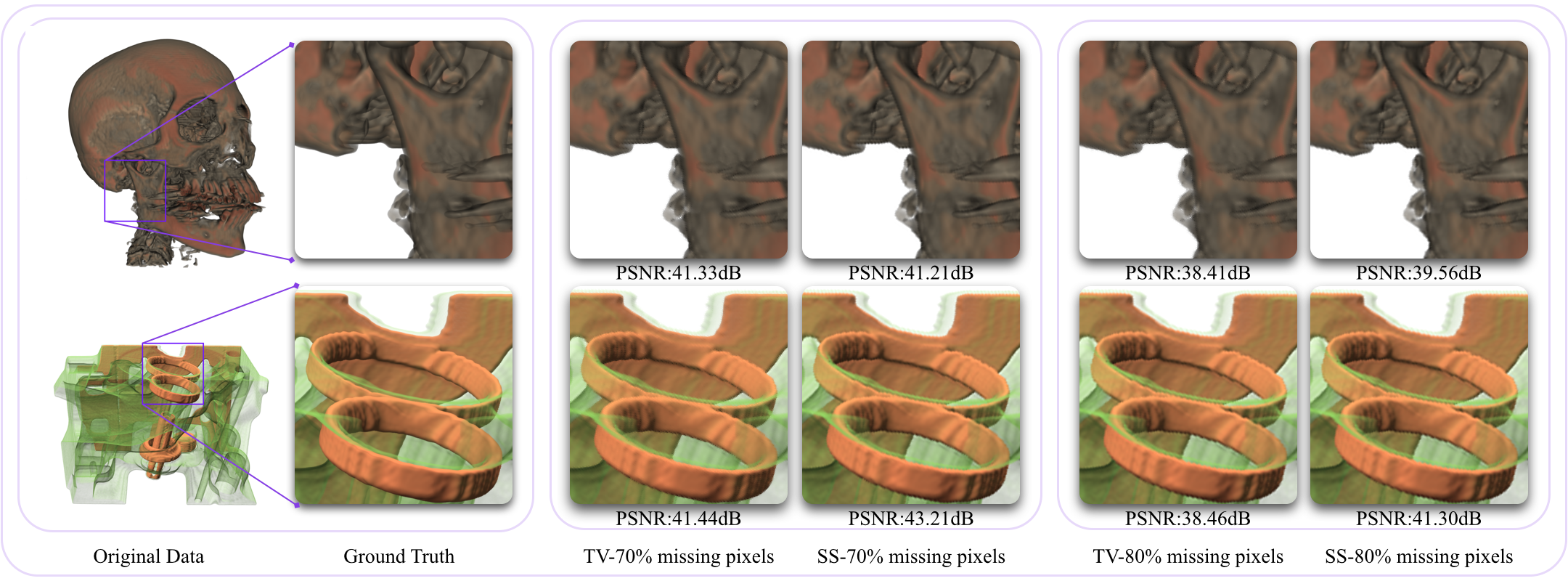Publication Type:
Journal ArticleSource:
Computer Graphics Forum (Proceedings of Eurographics/IEEE-VGTC Symposium on Visualization 2015 (EuroVis 2015)), Volume 34, Issue 3, p.101--110 (2015)URL:
http://dx.doi.org/10.1111/cgf.12622
Compressive rendering refers to the process of reconstructing a full image from a small subset of the rendered pixels, thereby expediting the rendering task. In this paper, we empirically investigate three image order techniques for compressive rendering that are suitable for direct volume rendering. The first technique is based on the theory of compressed sensing and leverages the sparsity of the image gradient in the Fourier domain. The latter techniques exploit smoothness properties of the rendered image; the second technique recovers the missing pixels via a total variation minimization procedure while the third technique incorporates a smoothness prior in a variational reconstruction framework employing interpolating cubic B-splines. We compare and contrast the three techniques in terms of quality, efficiency and sensitivity to the distribution of pixels. Our results show that smoothness-based techniques significantly outperform techniques that are based on compressed sensing and are also robust in the presence of highly incomplete information. We achieve high quality recovery with as little as 20% of the pixels distributed uniformly in screen space.
